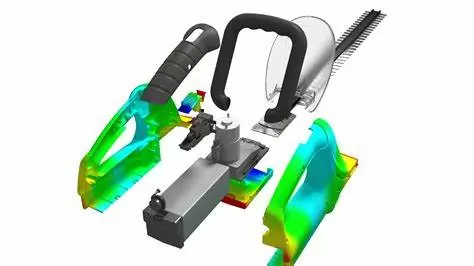Design for manufacturability (DFM) is a critical part of different manucturing techniques. DFM basically refers to the set of guidelines that product designers should align with to reduce the chances of manufacturing failure in their part production. For injection molding, there are many components of DFM. One of such components is Mold filling simulation.
What is Mold Filing Simulation?
Mold filling simulation is a model exercise that is carried out by part designers and engineers prior to injection molding to mirror the exact molding process and make critical decisions about the design before the injection mold is produced. It is like a pre-production performance that simulates the flow of the molten plastic into the mold cavity and observes all the parameters hat will be optimal for injection molding success.
How Does Mold Filling Simulation Work?
The mold filling simulation evaluates the manufacturability of the plastic part by simulating the filling of the mold cavity. It is achieved with a specialized software that choreographs the mold filling process across different phases and parameters. It will simulate all fill, pack, hold and cooling processes in the molding of the part.
Mold filling simulation may be done on mold design, process simulation or par design. The outputs from the mold filling simulation helps molding engineers to tick off or ponder an extensive range of items on the DFM checklist. Mold filling simulation can help evaluate defects such as sink marks, voids, shrinkage and warpages. It can also predict process imbalances such as high or low pressures, and high or low temperatures.
The results of the mold filling simulation often leads designers or engineers back to the drawing board. It enables them to make important corrections before the expensive costs of hard tooling are incurred.
Mold Filling Simulation Outputs
The following areas and aspects are where mold filling simulation analysis can help part designers and engineers to make improved decisions about mold cavity and mold design:
• Gate and runner system designs
• Mold cooling and heating
• Mold class
• Sprue design
• Shut-offs
• Shrinkage
• Warpages
• Side-actions and undercuts
• Venting and heat exchange
The following areas and aspects are where mold filling simulation analysis can help part designers and engineers to make improved decisions about overall product design:
• Draft angles
• Textures
• Use of ribs and gussets
• Coring
• Wall thickness
• Threads
• Living hinges
• Undercuts and special features
• Text design
• Bosses
Popular Mold Filling Simulation Software
As we have stated earlier, mold filling simulation is achieved with the use of some powerful software. These engineering software takes into consideration some of the most important design for manufacturability guidelines. Here are some of the most popular mold filling software you can try your hands on:
• Sigmafot
• REM3D
• eDesign
• Moldex Professional
• Moldflow
• Solidworks Plastic
Advantages of Mold Filling Simulations
A big advantage of mold filling simulation is the immense cost savings that comes with getting your mold design right before hard tooling. The following are the common issues that injection molding engineers can correct with mold filling simulation:
• Gate location problems
• Excess shrink or warping
• Weld lines
• Sink marks
• Areas that will trap air due to poor venting
First Part Injection Molding Services in China
FirstPart offers high quality, thermoplastic injection molding service for all your plastic part projects in China. We also offer low-volume manufacturing that serve small quantities from 50 to 10000 parts and produce for mass production. Our engineers are always available to advice on the best processes, materials and design optimization to ensure cost-savings, quick turnaround and the production of parts that are 100 percent defect and issue free.










